I’ve been mainly focusing on medieval England, Ireland and France recently, so I thought it was time medieval Norway got a look in. So I decided I’d write about Bergen and the castle there, known as Hakon’s Hall. Now I need to begin with a slight disclaimer, some of my photos of the Hall will have date stamps, this was due to a malfunction with my camera at the time. I can crop them out, but then you lose part of the photo so in this case I decided to leave them in. Also I was pretty much standing in puddles (it was very wet) to take some of the exterior shots, so there is the odd water droplet.
This post will predominantly be about Hakon’s Hall, but I did want to talk a little about Bergen as well,. Mainly as an excuse to use my photos of the old town and the ones from the top of the mountain, and because context is always good.
So Bergen.

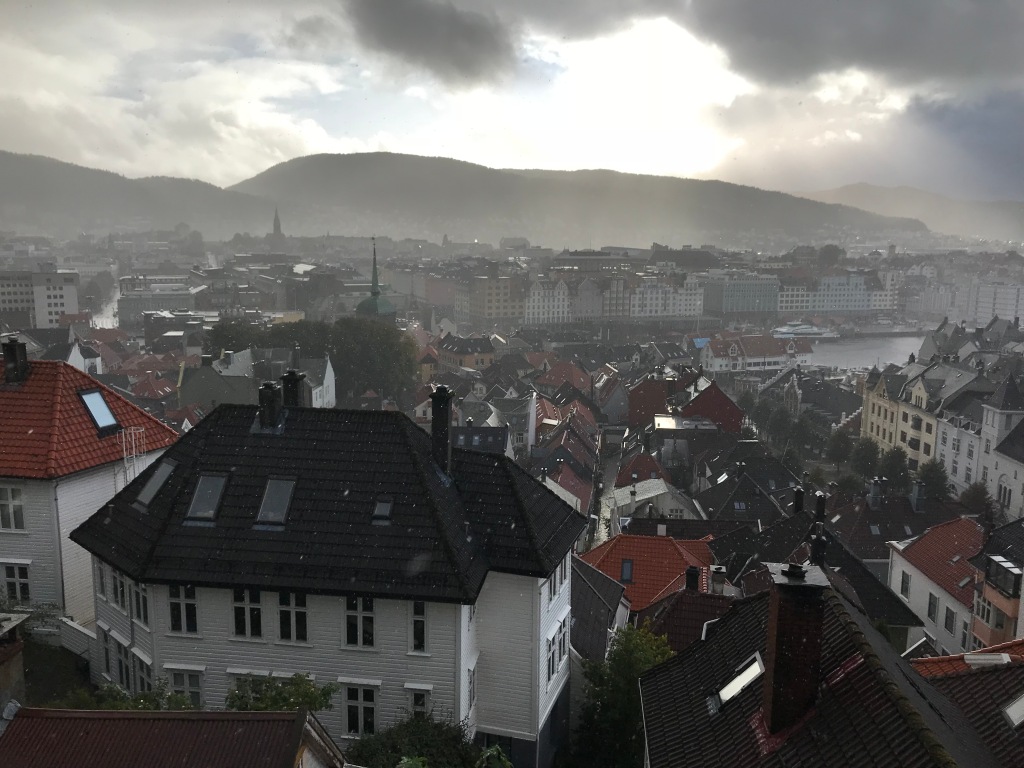
Bergen is the second largest city in Norway. It was founded in 1070 by King Olaf III Haraldsson. In the 12th and 13th centuries it was a the de-facto capital of Norway. It was the central residence and gathering point for the king and his assembly and was most likely the key administrative hub of the kingdom as well. Additionally it was, and still is, a major trading centre. In the 1300s it was possibly the largest town in Scandinavia with a population of 10 000. As a site of royal residence it was also of immense political importance, but I will return to the royal connections when I look at Hakon’s hall more closely.
From a trading perspective Bergen became an even more important port when the Hanseatic League of German merchants acquired control of the trade in Bergen in the 14th century, they continued this hold until the 17th century. The old town of Bergen, called Byrggen, is Unesco World Heritage listed. It was listed in 1979 as an important example of a trading centre going back to the 14th century and as a centre for the Hanseatic League. The Hanseatic League was essentially a cabal of Germanic merchants who cooperated across seven countries and nearly 200 cities to control large areas of trade from roughly the 14th century until the 17th century. Bergen was one of the key ports in this network. Although fire has destroyed much of Byrggen over the years, it has been restored using traditional methods, so the integrity of the old town remains, giving a fascinating visual window into how Bergen would have looked and operated centuries before. The buildings are all built from pine, and continue to be restored today with traditional methods and tools. In the early 2000s the repair work on just two buildings used 3500-4000 board meters of pine, which is sourced from local forests. There are roughly 62 buildings remaining in Byrggen, and looking after them is an ongoing conservation process. The Byrggen you see today, stems from a large fire in 1702. You can see how the buildings work in the photos below
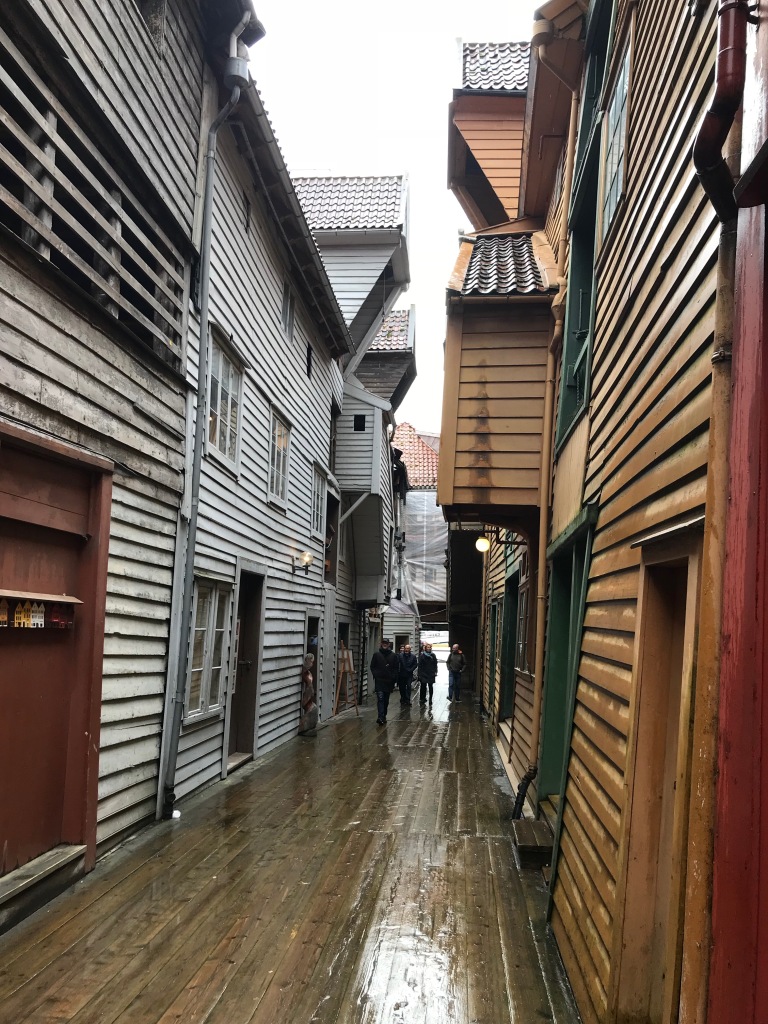
This is by no means a comprehensive history of Bergen, but it sets the stage for the remainder of this piece: Hakon’s Hall. Hakon’s Hall has always been part of a larger fortress complex , now called Bergenhaus Fortress or Begenhaus Castle. It was an active military complex into the 20th century and the buildings on the site, including a military museum, reflect this. The only time it saw conflict was in 1665 when the garrison of Bergenhaus Castle intervened on the side of the Dutch in a battle with the English and the English were forced to flee. You can see some of the other buildings that make up the fortress in the photos below.
It was used as a base of operations during the German occupation in World War II. In fact it was an accident in World War II which caused significant damage to Hakon’s Hall and other parts of Begenhaus Fortress, which resulted in large scale restoration. But that is at the end of the Hall’s story; let’s begin at the beginning.

The Hall itself dates to the reign of, unsurprisingly, King Hakon. King Hakon Hakonson was the first king who united Norway under a single ruler. He reigned from 1207-1263 and there is a saga about his life called Harkonar sara Hakonarsonar, which was commissioned by his son not long after his death. Incidentally it was written by Icelander Sturla Þórðarson who was the nephew of Snorri Sturlson, the famous saga writer who has been featured on this blog before. You can read about Snorri here. The saga outlines King Hakon’s life and movements, in quite a bit of detail as he travelled around his kingdom. Medieval kings were often peripatetic as they moved around a lot to ensure their rule of law was enacted. In Haakon’s case, during his reign he spent 26 winters in Bergen, more than half of the winters of his time as king, which highlights the importance of Bergen and the castle to him as a central base. King Hakon, had come to throne on the back of a series of civil wars so when he began to rebuild the structures at Bergenhaus in stone, it made sense that as well as being practical useful buildings they were also fortified.
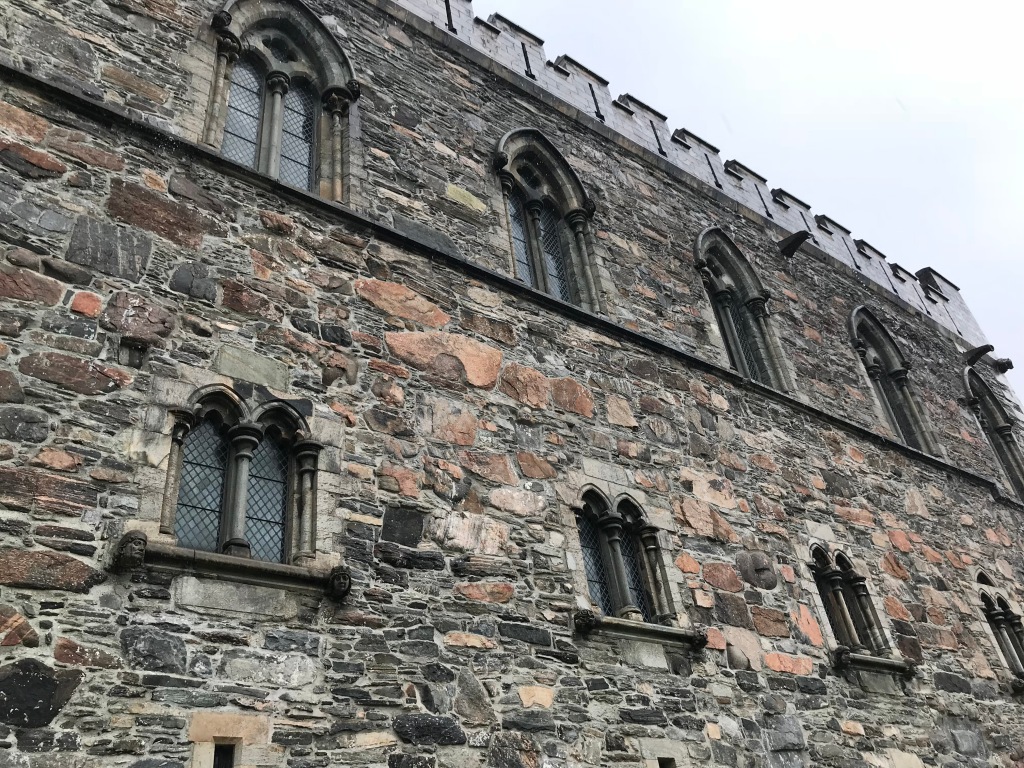
So the building that stands today that is known as Hakon’s Hall, is the key remaining part of what was an extensive rebuilding project. He actually had two halls built. The larger of the two is Hakon’s Hall, though at the time it was referred to simply as the stone hall. The second was the Yule Hall, which from the name would have been used for yule celebrations and the coming together of the king and his retinue. The first known use of the two halls was in 1261 on the 11th of September for the wedding of Hakon’s son Magnus, who was also his joint king.
The Hall itself would have been very imposing for its time; 37 m long and 16 m wide it was designed to illustrate the power of the king and is actually one of the largest halls in medieval Europe. It was also a big step to build in stone, in a country known for its extensive amount of wood and expert carpenters, the Hall was making a statement of authority and military strength.
King Hakon died in 1263 in Kirkwell in Orkney, after fighting several battles in an attempt to ensure Norse rule over the island. The Haakon Haakonsson’s Saga described his death from an unspecified ‘disorder’ and went on to say that
The King still found his disorder increasing. He therefore took into consideration the pay to be given to his troops, and commanded that a mark of fine silver should be given to each courtier, and half a mark to each of the masters of the lights, chamberlains, and other attendants on his person. He ordered all the silver plate belonging to his table to be weighed, and to be distributed if his standard silver fell short. At this time also letters were written to Prince Magnus concerning the government of the nation, and some things which the King wanted to have settled respecting the army.
It went on to say: He still spoke distinctly; and his particular favourites asked him if he left behind him any other son than Prince Magnus, or any other heirs that should share in the kingdom, but he uniformly persisted that he had no other heirs in the male or female line than were publicly known.
and
On Sunday the royal corpse was carried into the upper hall, and laid on a bier. The body was clothed in a rich garb, with a garland on the head, and dressed out as became a crowned monarch. The masters of the lights stood with tapers in their hands, and the whole hall was illuminated. All the people came to see the body, which appeared beautiful and animated, and the King’s countenance was fair and ruddy as while he was alive. It was some alleviation of the deep sorrow of the beholders to see the corpse of their departed sovereign so decorated.
So with Hakon’s death the possession of the Hall passed into the hands of his son, King Magnus. He repaired the hall after a fire in 1266 and added to the complex by building a keep in around 1270. The keep was ultimately incorporated into the 16th century Rosencrantz Tower which you can see below covered in scaffold.
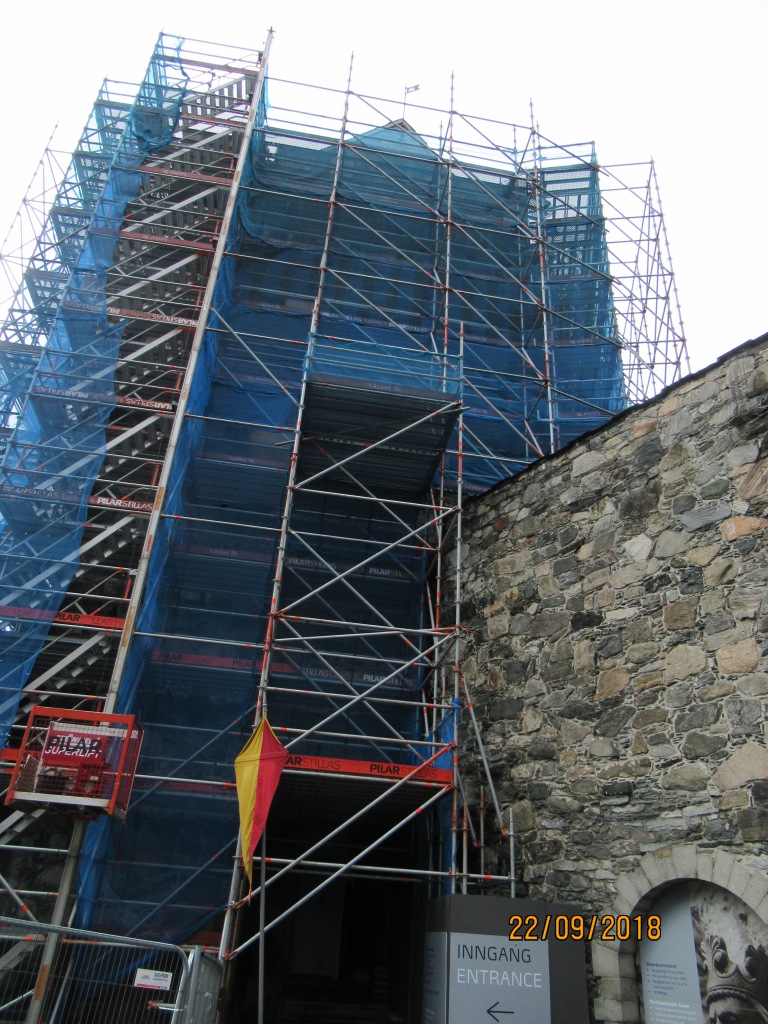
Hakon’s Hall remained at the centre of the life of the royal court. This was partly because at this stage Olso was not a royal city as it was the centre of a Dukedom. Hakon’s grandson Eirik, who reigned from 1280-1299, used Bergen as the main royal residence and he actually died in Hakon’s Hall, as in he deliberately had his death bed there. The Hall stayed important to the royal court as long as Bergen remained the main administrative centre for the Kings of Norway and one of the main meeting places for the assemblies which governed the Kingdom. When Hakon V succeeded his brother Eirik in 1299, as he’d been a Duke who ran much of his administration from Oslo and he continued to do so, splitting his time between Bergen and Olso. Bergen’s central role began to diminish. Once Denmark and Norway became a unified kingdom in 1380, Oslo gained more prominence because it was closer to Copenhagen and the area had become more prosperous, though Bergen still had the higher population. So Hakon’s Hall as a place of royal authority waxed and waned inextricably with the fate of Bergen as a seat of royal power. It was still functioning as a representative building in its own right in the reign of Christian I because it is mentioned when he visited Bergen in 1450, but by the 16th century it has effectively become a storage room, or a barracks for the soldiers. You can still see its visual prominence as part of the complex of buildings in this late 16th century depiction of Bergen by Scholeus
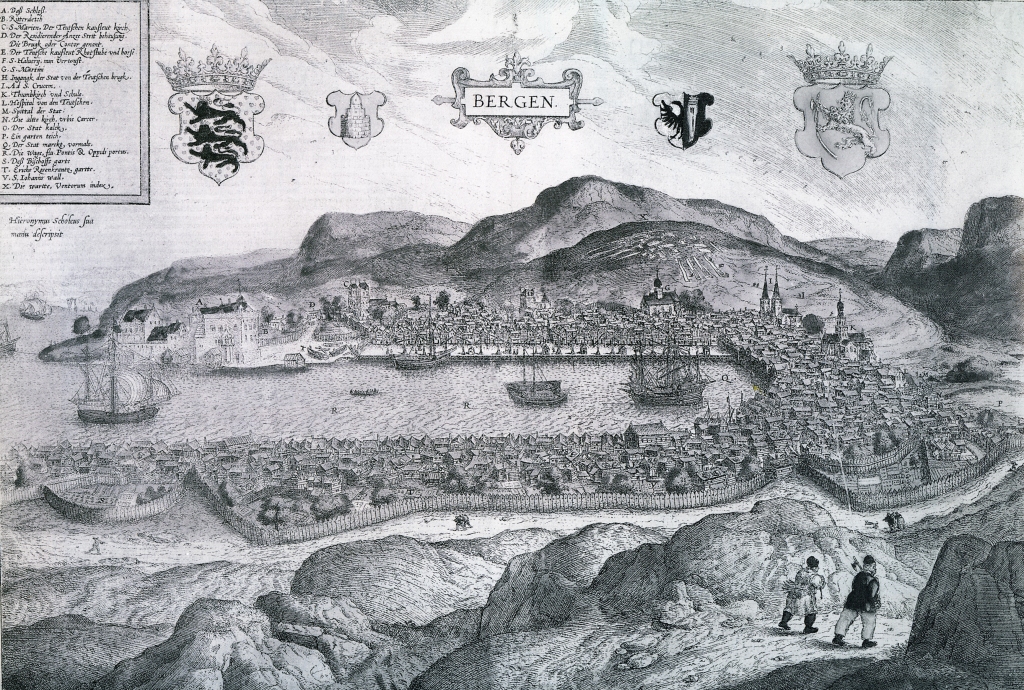
The question of what you see today and how much it relates to the original hall of 1261 is a complicated one. It has always been part of a larger complex, but its identity was lost as it was incorporated into the wider Bergenhaus fortress, in fact it used a prison from the beginning of the 19th century. It was known as ‘the Slavery’ and its royal antecedents forgotten. Additionally it has been restored a number of times, probably the most extensive was in the 19th century when the distinctive external gabling was included. This was a period of time when, along with a lot of other European countries, Norway was rediscovering and romanticising its medieval past.

Other parts of the 19th century restorations included some of the windows and some of the lovely carved heads which adorn them and were possibly based on the originals. You can see the carved heads in the photos below.

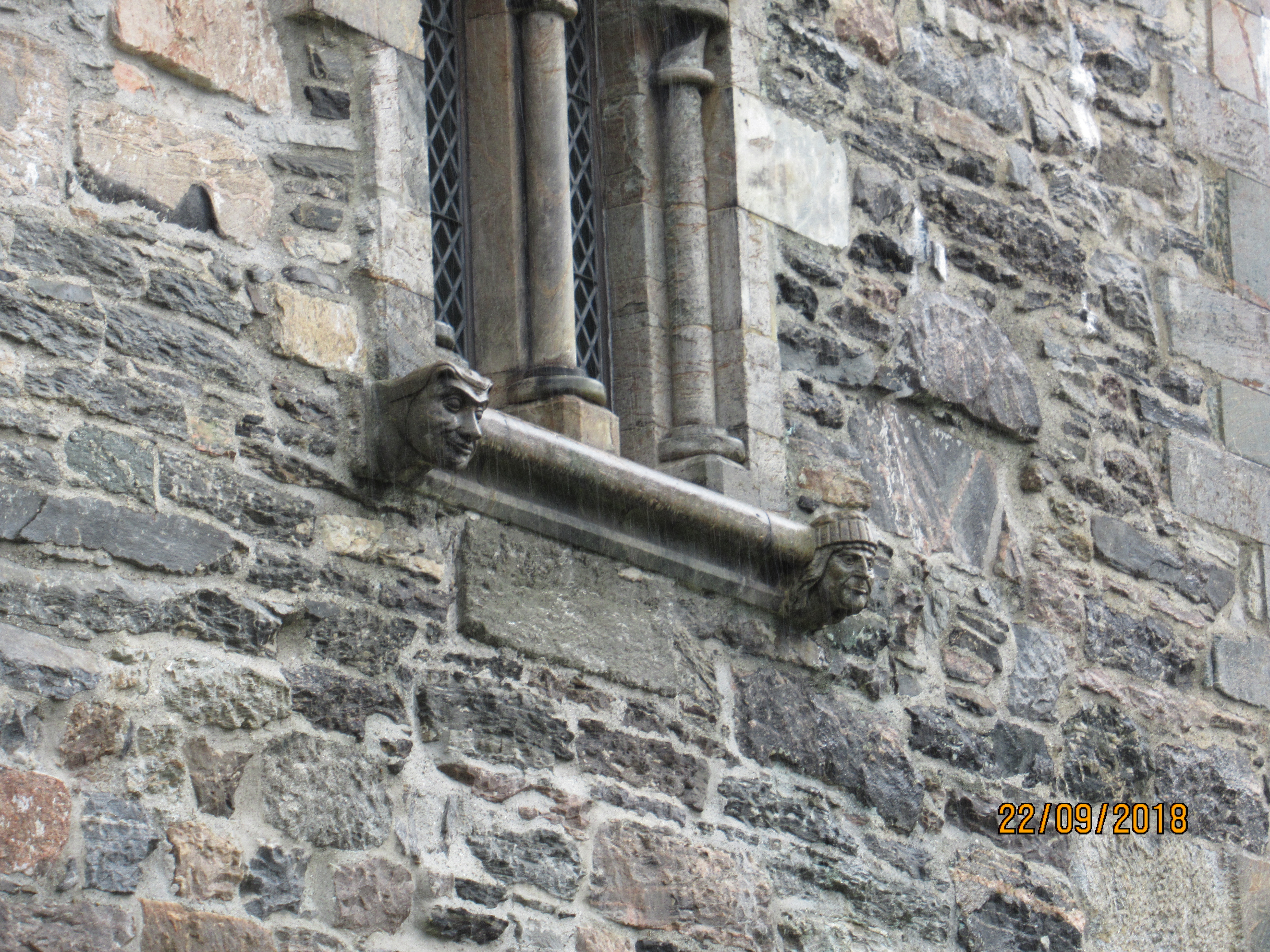
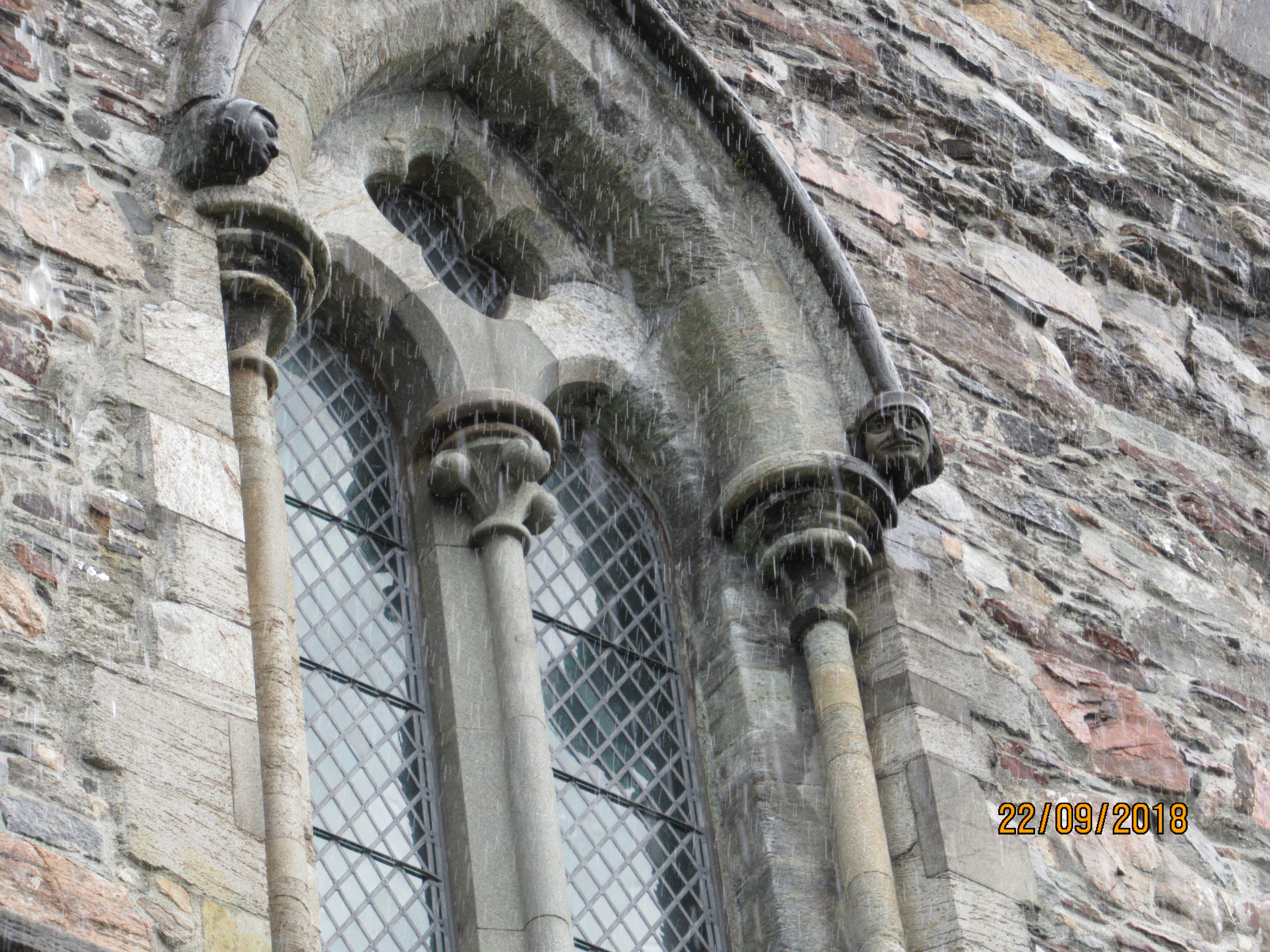


The final restoration, pretty much to the hall you see today, was necessitated by the accident towards the end of World War Two that I mentioned earlier. So, on the 20th of April 1944 the Dutch freight ship Voorbode was docked in Bergen for emergency repairs when the cargo of tons of dynamite exploded. It has never been fully disproved whether it was sabotage or not. The explosion killed more than one hundred people and about five thousand people were injured. It also blew the roof off the Hall and set fire to it. Damage control occurred quickly, but it wasn’t until the 1950s that it could be completely restored. You can see the damage in the model below.
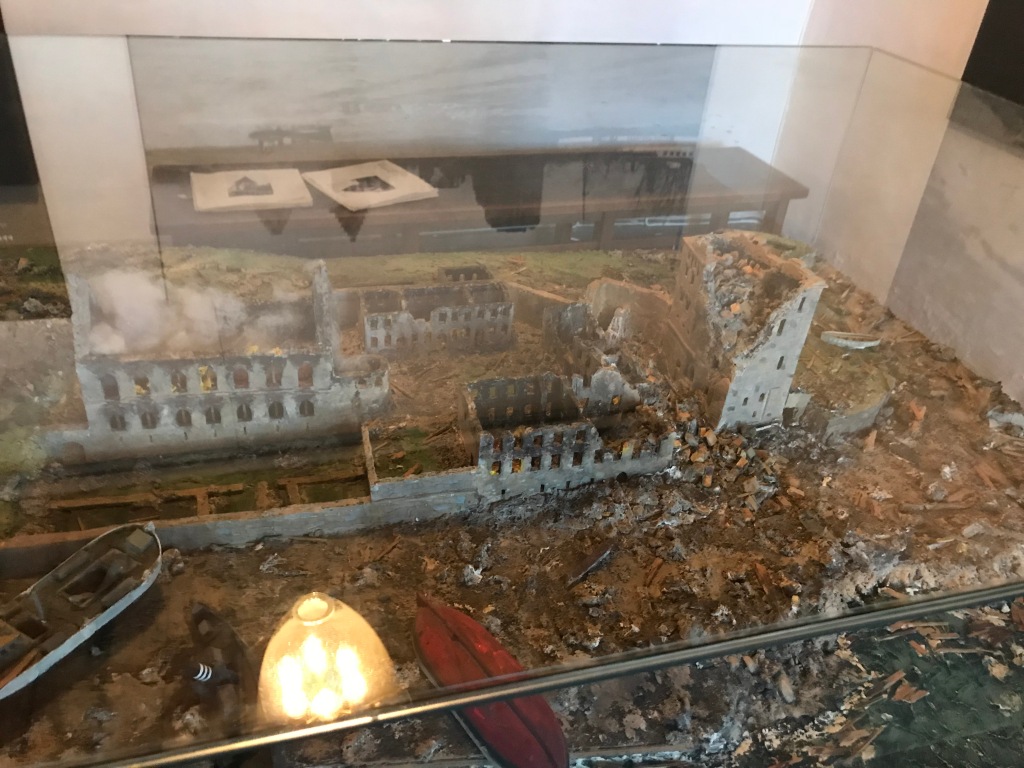
The Hall you see today was opened for the 700th anniversary in 1961. It was decided to keep much of the 19th century restoration, but the main difference is the walls inside and out were un-plastered. The intention was to make it a space that while reflecting its medieval origins, also can be used as part of the modern society. For example the textiles that hang in pride of place in the main hall were commissioned specially as the height of their craft in 1961. You can see some of the textiles and more photos of the main hall below.


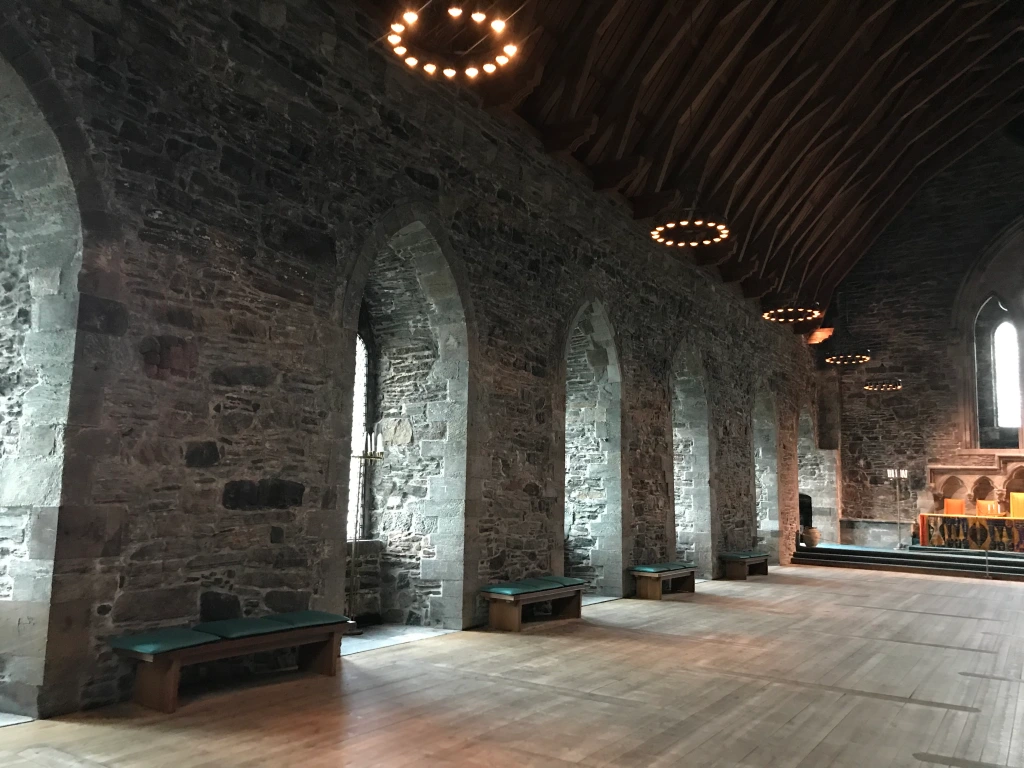
Hakon’s Hall is more than just the main hall however, so I thought I’d finished up this post with a look through some of the other sections. You actually don’t enter into the hall proper, there would originally have been a stair leading up to it, but today you go in through the covered entrance you can see below
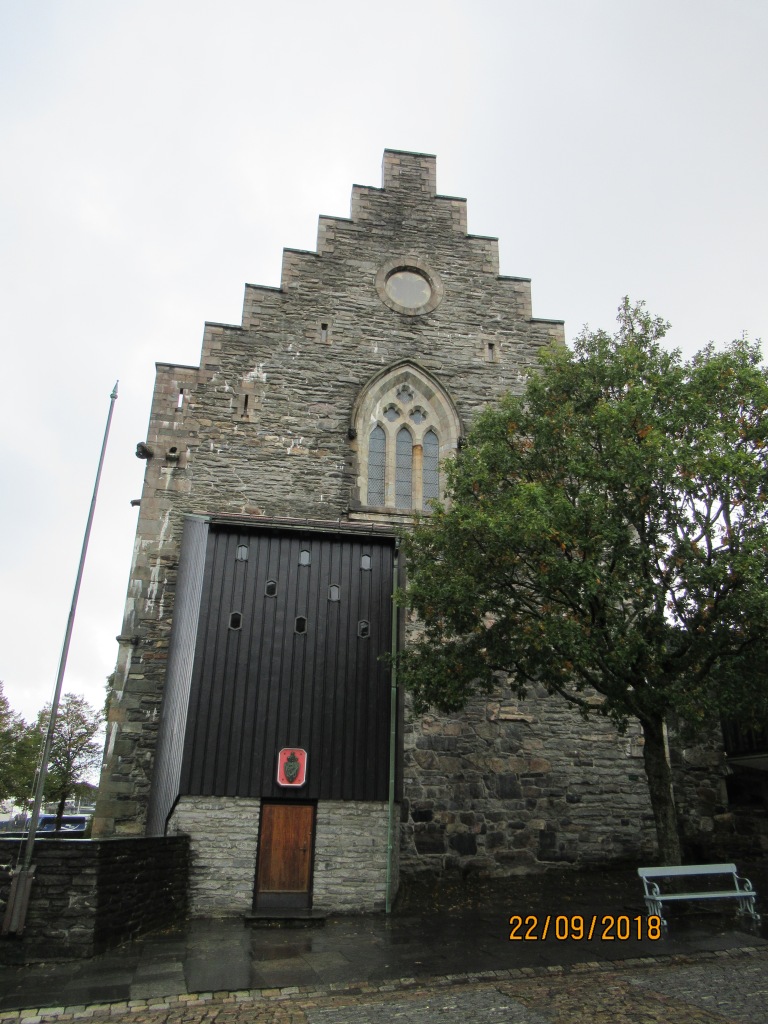
You come in to a side building and go down to the basement. You can see the bedrock in the basement proper and it would have been used as a storage room.
There is a middle story as well, which is more open with better light and the vaulting that was erected, in one form or another, to be a fireproof floor after the fire of 1266
These lower layers of the Hall, give you an idea of its time as a utilitarian building, even when it was the hall of kings. Today Hakon’s Hall has regained its rightful place in the history of Norway and serves as part of a museum that thousands visit every year to learn more about Norway and its rich and complex medieval antecedents.
References:
Site visit: 22/09/2018 (as you can see from all the date stamps)
Hakon’s Hall information booklet
Welcome to the Fortress Trail booklet
Hakonshallen 750 Years Royal Residence and National Monument / Oysten Hellesoe Brekke and Geir Atle Ersland (eds.)
https://web.archive.org/web/20110811094653/http://web.hist.uib.no/delfag-h97/tormod/explo.htm
https://commons.wikimedia.org/wiki/File:Scoleus.jpg
http://www.orkneyjar.com/history/haakondeath.htm
https://www.hanse.org/en/hanse-historic/the-history-of-the-hanseatic-league/
https://whc.unesco.org/en/list/59
The Photos are all mine
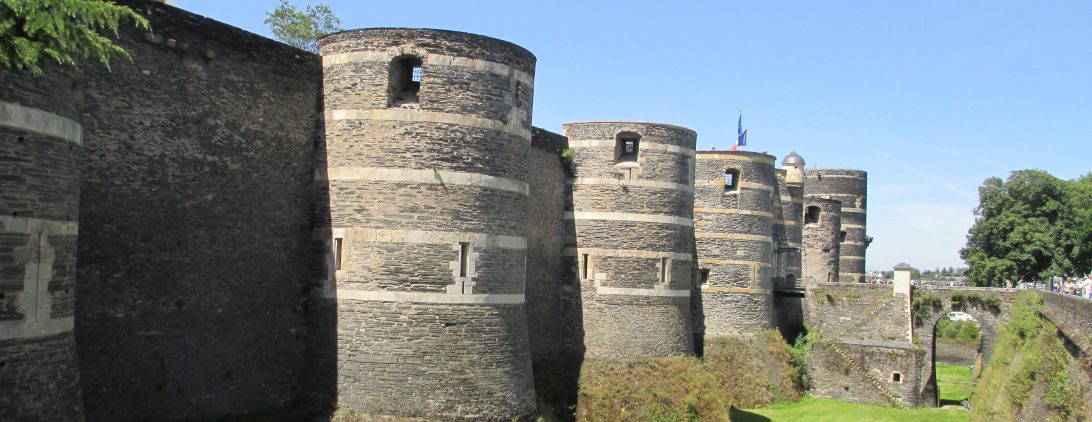


















A really interesting article and the photos show different architectural features so well.
LikeLike
Thanks Lyn, glad you enjoyed it
LikeLike